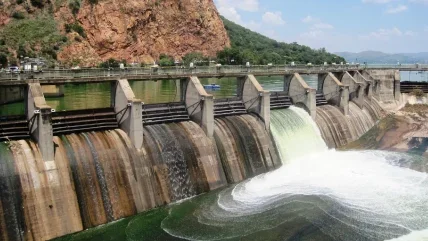
Dam Removal Europe (DRE) has just released its progress report for 2022 and claims that a record number of barriers, including weirs and dams, have been removed and reconnected over 832km of river habitat.
At least 325 barriers were removed in 16 European countries with Spain described as being the trail blazer for the second year in a row, followed by Sweden and France as in 2021, with Latvia and Luxembourg reporting removals for the first time.In Latvia’s case the removal was due to a natural collapse which highlights one of DRE’s concerns that 15% of all existing European barriers are considered obsolete and at risk of structural failure.
The majority (73%) of removed barriers were weirs with culverts and dams the next most common types. Seventy one percent were lower than 2m high, 25% were 2-5m high and 4% were higher than 5m. At least ten hydropower dams were dismantled in England, Finland, France, Norway, Spain and Sweden
The total number of removals was up 36% on 2022 and can be attributed to a combination of newly available funding opportunities such as the European Open Rivers Programme and EU LIFE Programme; the coordinated efforts of national and regional public authorities; plus mainstreaming activities and increased public awareness.
A coalition of seven organisations consisting of the World Wildlife Fund, The Rivers Trust, The Nature Conservancy, the European Rivers Network, Rewilding Europe, Wetlands International Europe, and the World Fish Migration Foundation, DRE’s overall ambition is to restore free-flowing rivers and streams across Europe and establish barrier removal as a restoration tool. Its annual Dam Removal Progress Report aims to evaluate the advancement in implementation of EU policies and to analyse the progress and impact of dam removal.
DRE adds that the Nature Restoration Law proposed by the European Commission in June 2022, and currently being negotiated in European Parliament, presents new obligations and targets to restore the health of Europe’s freshwater ecosystems. DRE says that it hopes the commission accepts the new law this summer as it will provide member states with a solid policy base to implement dam removal and restore more than 25,000km of rivers.
Awarding removals
The Dam Removal Europe Award for 2022 has been awarded to Spain for the removal of the Molino Bajo and Molino del Cabrillas weirs on the Cabrillas River. One of the main tributaries of the Alto Tajo, with rich fauna and flora and clear waters that are home to the native brown trout, the river is also a source of vital resources to the local population. Prior to removal these 3m high disused structures had created reservoirs filled with gravel that were completely impassable for fish. Funded by the first call for aid from the Open Rivers Programme, this removal project restored connectivity in about 25km of river and 50km within the fluvial basin.
A team from the University of Birmingham, the Environment Agency and contractors Sanctus in England were also shortlisted for the European Dam Removal award due to their success in removing a concrete weir from the River Cole near Ackers Adventure. The removal of this 170-year-old barrier will open-up a 14km stretch of river.
“Sanctus were proud to be selected as partners to assist in the vision of the Cole Catchment,” Thomas Levick, Engineering Manager at Sanctus said. “We were able to bring our specialist technical expertise to make a very noticeable and quantifiable positive impact on the project by remediating impacted silts, removing asbestos and fly tipped materials and management of invasive species – let alone the removal of the weir and opening up the Cole for migration.”
The Environment Agency says that removal of this 300-tonne concrete weir along with the 500m3 of contaminated sediments has been its aspiration for 15 years but it was only by working in collaboration with these partners that it finally become a reality.
The Dam Removal Europe Award is hosted by Dam Removal Europe, the World Fish Migration Foundation, the European Investment Bank, The Nature Conservancy, and supported by the Dutch Postcode Lottery and Forest Peace Foundation.






